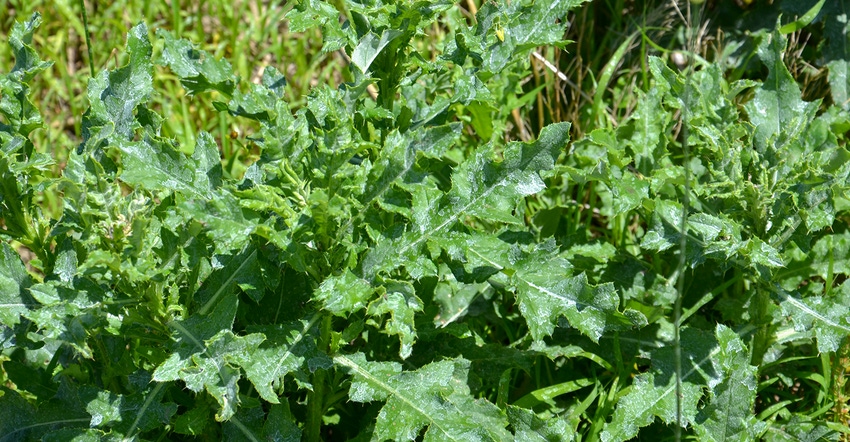
Here is the question for the panel of Indiana certified crop advisers. “I want to spray Canada thistles this fall. There are a few patches in my soybean fields. If I cut them off with the combine, can I still spray them right away? Would it be better to drive around them and spray them without cutting them off?”
The CCA panel includes Betsy Bower, agronomist with Ceres Solutions, Terre Haute; Jamie Bultemeier, agronomist and corporate sales director for A&L Great Lakes Labs, Fort Wayne; and Steve Gauck, sales agronomist for Beck’s, Greensburg.
Bower: It sort of depends upon when you start combining. Control of Canada thistle and other perennial weeds is more successful if you wait to spray with glyphosate and 2,4-D or dicamba after a light frost but before a killing frost. A light frost signals the plant to put resources into the roots to allow it to overwinter. If you time weed control after a light frost, the plant will translocate herbicide to underground rootstocks. That will impair overwintering root health. If you cut thistles off during harvest, immediately spray if a light frost has already occurred. Or you can wait for regrowth and a light frost before treating. You should be good if there are 3 to 4 inches of new growth.
Bultemeier: The key to controlling Canada thistle is depleting root reserves and reducing seed spread. You need enough foliage to intercept and absorb a lethal herbicide dose that can then be translocated to the roots. Canada thistle uses fall and spring growth to build root reserves to support rapid growth and seed formation in early summer. Cutting the plant will reduce the root reserve storage in the fall months. However, you need a minimum of 8 to 19 inches of new growth to have enough foliage to intercept the lethal dose of herbicide. Cutting them with an early soybean harvest may be a good option to help deplete root reserves. Cutting the plants in late October or November is not advisable.
Gauck: You ask if you cut them off, can you still spray them right away? And you want to know if you ought to drive around them instead while combining. This can be a two-part question. Ideally you would drive around the patches of Canada thistle so you do not spread more seed through the combine in that field, or even worse, spread it with the combine once you move to another field.
Canada thistle utilizes fall to put energy into its root system so it can come back up next spring. For the best long-term control, fall spraying is ideal. If you don’t cut them off, they can be sprayed right away. If you do happen to cut a few off, wait for the plant to start to recover slightly before spraying. If it’s growing again, you know it can take in herbicide and you will get an effective kill on this tough weed.
About the Author(s)
You May Also Like




